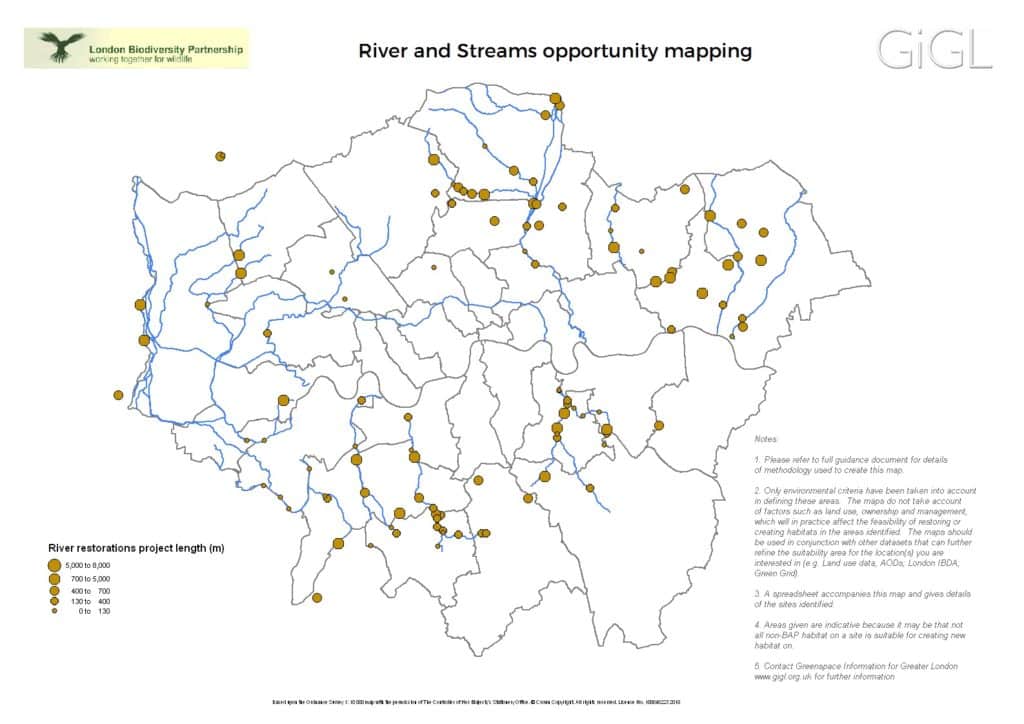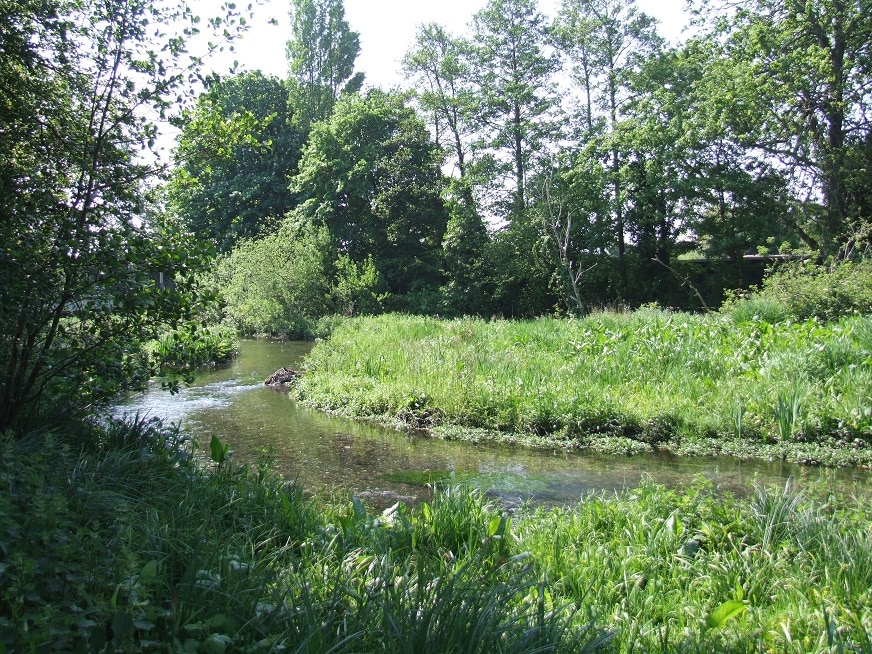Dave Webb is the Fisheries Biodiversity and Geomorphology Team Leader with the Environment Agency and also the Chair of the London River Restoration Group (LRRG), working on behalf of Catchment Partnerships across London to promote the delivery and understanding of River Restoration.
Restoring London’s rivers
The London Biodiversity Partnership has defined river restoration as ‘Measures that result in a significant increase in diversity of hydromorphological features and/or improved floodplain connectivity and the restoration of river function through essential physical or biological processes, including flooding, sediment transport and the facilitation of species movement’. This reflects the essential dynamic nature of rivers and recognises that the whole system can be impacted by degraded sections.
A 20 year review of river restoration across London published at London Rivers Week 2020 identified the importance of river restoration for delivering a range of social and economic benefits, such as contributing to health and wellbeing and reducing flood risk.
In recognition of this, the delivery of river restoration across London follows the ‘Catchment Based Approach’ (CaBA) which embeds collaborative working at a river catchment scale, delivering a range of environmental, social and economic benefits.
Opportunity mapping
In 2009, GiGL and the London Biodiversity Partnership undertook the first London wide mapping exercise to identify targets for river restoration and support the London Rivers Action plan. This opportunity map has gone on to assist partnerships and collaboration, and flagged opportunities for further work.

Completed restoration projects identified by the opportunity map include initiatives such as the Beam Parklands, which created 13 hectares of wetland habitat and restored approximately one kilometre of river, including sections of both the Wantz stream and River Beam. The majority of projects were completed by catchment partnerships, for example the Wandle volunteer led scheme, where a team of local volunteers helped with a river restoration project through all the phases – from idea and development through to the delivery of their own project on the river.

London Rivers Week 2021 and beyond
The 20 year river restoration review identified that since 2010, the length of river restored per year has remained constant, with on average just below 3km restored per year. In response to the increased pressure on the water environment due to climate change and population increase, the Catchment Partnerships in London called for a minimum of 5km of river to be restored each year.
To support this aspiration, the London River Restoration Group (LRRG) recommended that the original GiGL baseline line should be reviewed, and using data from the catchment partnerships and catchment action plans new opportunities mapped. Since August GiGL, the LRRG and catchment partnerships have been working together to develop the new maps. To date over 140 sites have been identified as locations for habitat improvement, which amounts to a minimum 38 km of river restored. The final map will be released as part of London Rivers Week 2021 and will show the breadth of restoration opportunity across London and raise awareness of the opportunities to restore rivers.
However this represents only part of the potential collaboration between LRRG and GiGL. Approximately 90% of restoration schemes identified ecological improvement as the primary objective, however 31 projects had some flood risk management benefit and a minimum of 1661 properties had flood risk reduced. The review also identified a significant increase in volunteer activity over the last 10 years, with the South East Rivers Trust reporting a 673% increase in numbers of volunteers between 2013 and 2019.
Working with GiGL, we hope to use the opportunity mapping to assist in the discussion on biodiversity net gain and inform the development of nature recovery networks. We also hope that by using this data in combination with other environmental and social datasets, we can better signpost the wider benefits of schemes in terms of access to nature, inclusion and climate change resilience.

Gosh, I was a Wandswoeth Councillor from 2006-10 and walked the Wandle from its estuary to Croydon, in places not very inspiring – I remember wondering not just why people would want to get a sofa down to the river but how! they did it! I’m inspired to have another go, see what it looks like now.